Tips, Tricks & Hacks for Growing an Edelweiss Flower at Home
In the past year, many folks have taken up gardening and being a houseplant mom (myself included). This got me thinking “I wonder if I can grow my own edelweiss plant here at home in my own garden!?” I am probably the farthest from an edelweiss plant expert as it comes, so I reached out to my pal Farmer Dan for advice.
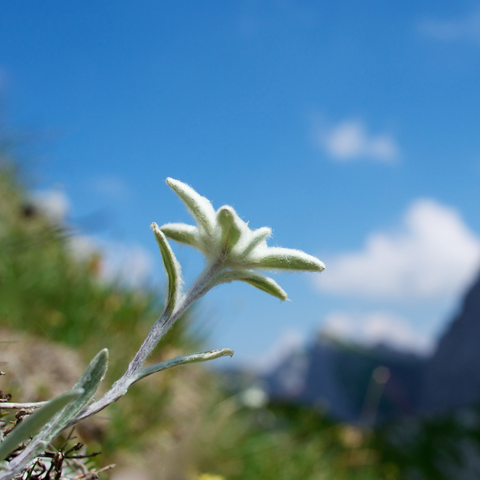
We grew up together in the American Aid Society of German Descendents German Club, and he is a WEALTH of knowledge when it comes to anything that has to do with plants, dirt and veggies. I asked him if he had some tips, tricks and hacks for growing edelweiss at home. Will this Alpine beauty even grow here? Let’s find out!

 The following was written by Farmer Dan Pilguy founder of Arlington Crest Farms.
The following was written by Farmer Dan Pilguy founder of Arlington Crest Farms.
Edelweiss (Leontopodium alpinum) is a perennial alpine flower and herb native. Germany, Switzerland, France, and many alpine countries observe it as a protected flower. Edelweiss is an iconic wool flower. It has white flower heads with clumped yellow florets in the center that are accompanied by felt textured leaves that are silvery-green in color. These plants tend to grow in mountainous regions.
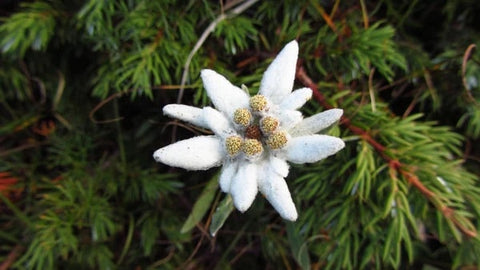
Common in much European folklore, edelweiss plants have medicinal properties that are still being researched. Some cultures believe edelweiss contains anti-cancer properties, and the plants known biological activities are shared with other medicinal herbs such as Echinacea and Mugwort. Their shared flavonoid chemistry has effective uses for inflammation and gastrointestinal pain.

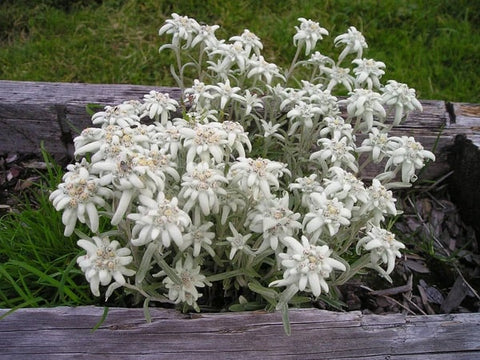

If you want to plant edelweiss - its a rewarding time but it takes time. Starting and raising the seed takes about two months under controlled settings. It is suggested to keep the seeds inside the refrigerate for 3 weeks in darkness, followed by two weeks at 55 degrees Fahrenheit. The idea is to replicate the cold temperatures that edelweiss grows, so you create the natural unthawing of the permafrost.
If you have an abundance of seeds I would only recommend trying out a few this way. Trust me, starting medicinal herbs inside is not as fun as it sounds.


After the danger of frost has passed (late April or early spring), use the majority of the seeds to broadcast outside in a garden pots with rich yet well draining soil. Best practice would be to mix equal parts peat moss, sand, and compost. I myself will add a cup of my worm compost per 1.5 cubic feet of soil as a base fertilizer to plant edelweiss.

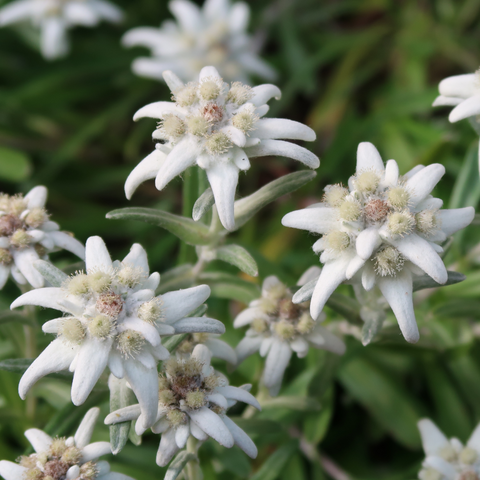
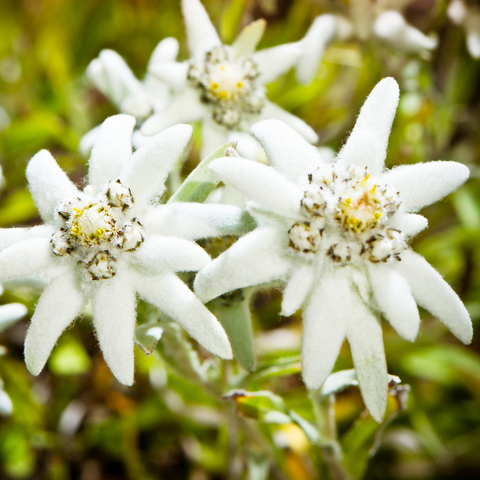
Contact me at the email below if you're interested in some of my homemade vermicompost.

Because the germination rates are not the best I would suggest sprinkling 25 -50 seeds for each pot. I would suggest gallon clay pots with drainage holes. Lightly top dress seeds ¼ inch with soil and keep the surface moist with a spray bottle daily until germination.
If using a hose, make sure to have a mist setting on. High pressure watering will definitely disrupt the surface and risk lower germination rates or the loss of edelweiss seeds. You want to make sure the seeds consistently moist without overwatering. Place the potted edelweiss in an area in an area you pass quite frequently so you do not forget to water. Patience is key because it may take up to two weeks.

Keep the kids, house pets, and your local critters out at all costs! Also make sure to move containers out of inclement weather like heavy rain or wind storms until seedlings are a few inches tall. This is undoubtedly the hardest part of growing edelweiss flowers, so if you can through this you are golden.
After germination you can carefully pick out individual plants to transplant them into a cool shaded garden or other containers. I would not grow more than 8 plants per pot. In nature they thrive in rocky soil at high altitudes, so perhaps a steep rock garden may be the ultimate destination for it. Think of an outside area that you go to cool off when it is super-hot out. Kind of like late spring. That is where these mountain flowers will thrive.

by Farmer Dan Pilguy of Arlington Crest Farms
More about Farmer Dan: “Palatine, IL native Dan Pilguy is the owner and operator of Arlington Crest Farms. In 2012 he embarked on his farming career by co-founding a start-up of business in rural Iowa with a college classmate. They combined their passion to grow fresh organic produce.
In 2014 Farmer Dan established himself a Community Supported Agriculture base back home in Palatine. With his determination and passion to provide food in the Chicago suburbs, Dan decided to take a leap of faith and transition himself as an Illinois farmer.
Over the course of two years, farmer Dan, alongside the help and support of his family, friends, and neighbors, developed what is now a 1/2 acre suburban farm. By 2016 Arlington Crest Farms was officially founded with the support of 35 CSA members. He now operates full time in Illinois along with additional land for more crops provided by neighbors. AC Farms also works with Turtle Creek Farm as a produce wholesaler.
Click here to see pictures of how the Pilguy's backyard was transformed into AC Farms!” - from the AC Farms website
Check out their Instagram page HERE


Looking for more German Dirndl Style tips & tricks? Click the link to get access to our official style guide! >> https://bit.ly/dirndlstyle
-
Ever wonder which German dirndl style you are? Click here to take our quiz and find out now!






Comments
Juliana said:
Please send me directions for making vermicompost.
Caroline Carley. said:
Hello, I have bought edelweiss small plants as I wish to grow they came today.
Any advice you could give soil etc would be appreciated
Kind regards
Caroline.